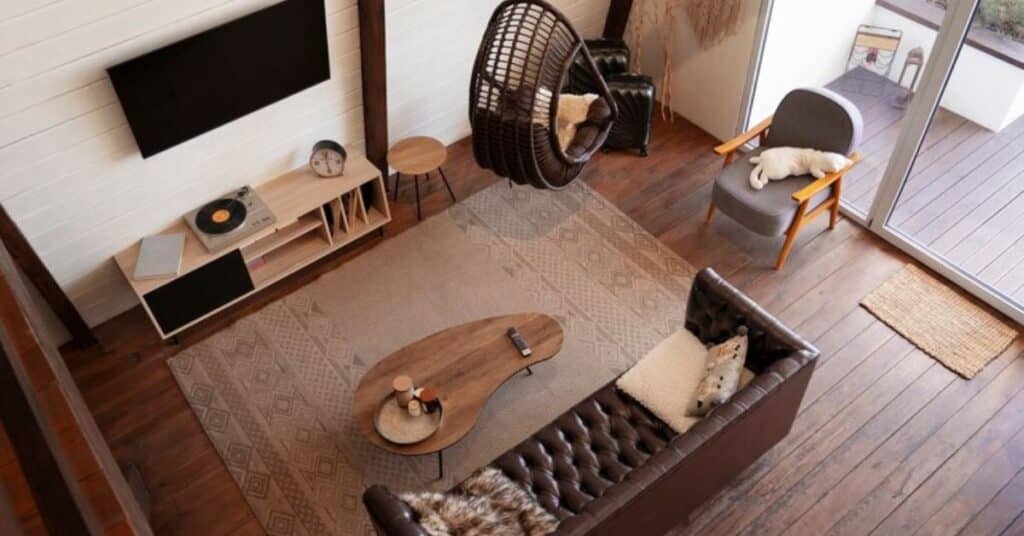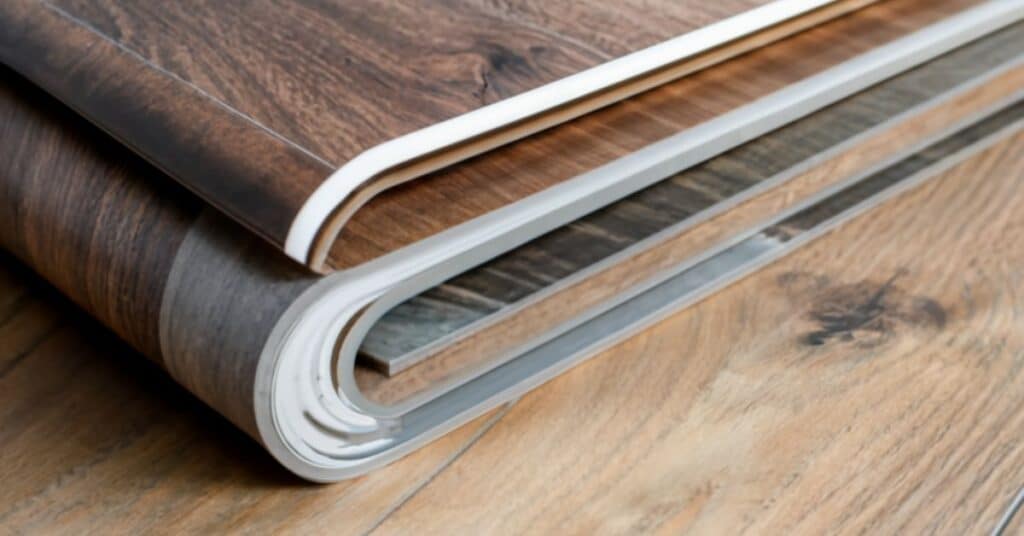When picking LVP flooring, go for a wear-layer thickness that suits your needs. Thicker layers offer more durability against scratches and wear.
Selecting the right wear-layer thickness for your luxury vinyl plank (LVP) flooring is crucial for its durability and longevity. The wear layer acts as a protective barrier against scratches, stains, and daily wear and tear. However, determining the ideal thickness can be a daunting task. Here a Question arises How To Choose The Best Wear-Layer Thickness For LVP Flooring? A thicker wear layer typically offers more resistance to damage and prolongs the lifespan of your flooring.
To choose the best wear-layer thickness for LVP flooring, consider foot traffic and usage. Thicker wear layers offer more durability and protection against scratches. For low-traffic areas, a thinner wear layer may suffice while balancing cost and performance.
Calculating Thickness
When calculating thickness, start with measuring the object’s dimensions. Use a ruler or calipers for accuracy. Then, determine the material’s density for precise calculations.
Next, multiply the dimensions by the density to find the volume. Divide the object’s mass by its volume to get the thickness. This method works for various materials, from paper to metal sheets.
The Wear Layer
The wear layer is a protective coating applied to flooring surfaces. It shields against scratches, stains, and everyday wear and tear. This layer extends the lifespan of the flooring, keeping it looking new for longer.
Different types of flooring have varying wear layer thicknesses. Thicker wear layers offer more durability and resistance to damage. When choosing flooring, consider the wear layer’s thickness for longevity and performance.
The Core Layer
The core layer is the central component of many types of flooring. It provides stability and strength to the flooring structure. Depending on the material, core layers can be made of wood, PVC, or composite materials.
Different flooring types have different core layer compositions. For example, in engineered hardwood flooring, the core layer consists of layers of plywood or high-density fiberboard (HDF). Understanding the core layer’s composition is crucial for selecting flooring that meets your durability and performance needs.
The Backing
The backing is the bottom layer of many types of flooring materials. It provides support and stability to the flooring structure. Depending on the flooring type, the backing can be made of various materials such as felt, foam, or fiberglass.
The backing also serves as a barrier against moisture and helps to reduce noise transmission. It adds comfort underfoot and enhances the overall performance of the flooring. Understanding the backing’s role is important when selecting flooring suitable for your space and needs.
Wear Layer Thickness
The wear layer thickness is an important factor to consider when choosing flooring. It determines the level of protection against scratches, stains, and wear. Thicker wear layers offer greater durability and longevity to the flooring.
Different types of flooring come with varying wear layer thickness options. For high-traffic areas or commercial spaces, opting for a thicker wear layer is advisable. Understanding wear layer thickness ensures you select flooring that suits your needs and withstands daily use effectively.
The Thickest Wear Layer
The thickest wear layer offers top-tier protection for flooring, ideal for high-traffic areas. It’s a wise choice for both commercial spaces and homes with active lifestyles, providing durability against scratches and stains. Opting for this wear layer ensures long-term resilience, making it a smart investment for lasting flooring solutions.
XL Vinyl Planks

XL vinyl planks are a popular flooring option known for their durability and versatility. These planks come in larger sizes than traditional vinyl flooring, making them suitable for spacious areas. Their wide planks create a modern and stylish look in any room.
With XL vinyl planks, installation is quick and easy, thanks to their click-lock system. They can be installed over most existing floors, saving time and money on preparation. XL vinyl planks are also water-resistant, making them ideal for kitchens, bathrooms, and other moisture-prone areas.
What a Wear Layer Will and Won’t Do
A wear layer will protect your flooring from scratches, stains, and daily wear and tear, extending its lifespan. It acts as a shield, preserving the appearance and integrity of your floors for years to come. Additionally, a wear layer provides added durability, making your flooring suitable for high-traffic areas. All Wear Layers Are Not Created Equal
Rigid Core Vinyl Planks

Rigid core vinyl planks are robust and versatile, ideal for busy spaces. They resist denting and warping, ensuring durability even in high-traffic areas. Installation is simple, and they come in diverse styles to suit any decor.
These planks offer the convenience of DIY installation and are available in various designs. With their waterproof nature, they’re perfect for moisture-prone areas like kitchens and bathrooms. Their stability and durability make them a practical choice for modern homes.
Thicker Wear Is Not Always Better
Thicker wear layers can be costly and unnecessary for low-traffic areas. In such cases, a thinner wear layer may suffice without compromising performance. It’s important to assess the specific needs of the space before deciding on the appropriate wear layer thickness.
WEAR LAYER AND YOUR NEW FLOOR
When selecting a new floor, the wear layer plays a crucial role in its durability and performance. Opting for a wear layer with appropriate thickness ensures your flooring withstands daily wear and tear, maintaining its appearance for years to come. Thicker wear layers offer enhanced protection against scratches and stains, making them ideal for areas with heavy foot traffic. Understanding here is question arias How To Choose The Best Wear-Layer Thickness For LVP Flooring involves considering factors like foot traffic and desired level of protection to ensure longevity and maintain optimal performance.
What To Focus on When Choosing Rigid Core Vinyl Flooring
When choosing rigid core vinyl flooring, prioritize durability, ease of installation, and design versatility. Opt for planks with a sturdy construction to withstand wear and tear in busy areas. Look for simple installation methods like click-lock systems for convenience and explore various design options to find the perfect match for your space.
Conclusion
Understanding How To Choose The Best Wear-Layer Thickness For LVP Flooring is essential for ensuring the longevity and performance of your new floor. By considering factors like foot traffic and desired protection level, you can make an informed decision that meets your specific needs. Remember to prioritize durability and maintenance requirements to select the ideal wear layer thickness for your LVP flooring.
Frequently Asked Questions
What is a good wear layer thickness for LVP?
A good wear layer thickness for LVP (Luxury Vinyl Plank) flooring is typically around 20 mil or higher for optimal durability.
How thick do you want LVP flooring?
Ideally, you want LVP flooring to have a wear layer thickness of at least 12 mil to withstand daily wear and tear effectively.
Is 12 mil LVP better than 22 mil?
In general, a 22 mil LVP is better than a 12 mil LVP as it offers superior protection against scratches, stains, and other damage.
How do I choose a good quality LVP?
When choosing a good quality LVP, look for options with thicker wear layers, high-density cores, and realistic designs to ensure durability and aesthetic appeal.

Warner Clips is an expert writer with 4 years of experience crafting engaging content on Home topics. My expertise ranges from creating cozy environments to tackling Home Improvement projects. Find my work in publications like Huffington Post and Reader’s Digest.







